|
A fine Summer day here in Payson today, I
headed out to the River up the road to see what new life was
beginning in the creek. Heavy layers of algae had started to
form on slow spots, and I could only see tiny minnows skirting
about the bottom. Samples of the algae were taken and brought
back to the lab for study under the microscope. A surprise was
in store! While the algae was of a type I had never seen under
the scope before, dozens of tiny transparent ostrcods were skittering
about.
The way they move
is really interesting. They are a bivalved crustacean, with two
compound eyes, antenna and mouth parts and legs that stick out
of the slot between valves. When the move, they race up and down
the individual algae strands by crawling at high speed with thier
tiny legs that protrude out the slot. Then they jump off into
the open water and zoom around until they hit another strand.
Then going up and down again up the strands looking for prey.
To photograph these
fast moving animals, I put two in a drop of water on a microscope
slide and carfuly put a cover slip over them without crushing
them. They were alive and well, and held stationary for my shots.
After the shots were taken, they were returned to thier aqueous
enviornment.
CLICK ALL THUMBNAILS
FOR THE LARGER VIEW
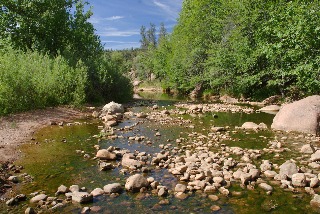 |
Lets
start with a shot of location. Im standing on the bank of the
river, and you can see the green color in the water. |
 |
At
60x, the algal strands show some fine internal details. They
were in long hair like masses. |
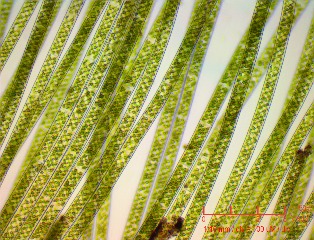 |
Zooming
in at 150x we can now see the very organized nature of the internal
structures. |
 |
600x
shows internal diagonal crosslinking of the internal structures
and cell walls as partitions between cells. |
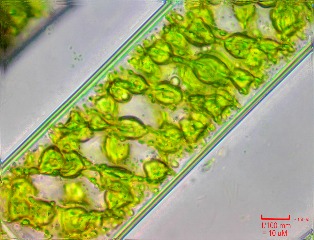 |
At
1500x you can see the small round chloroplasts and mitochondrion
swimming round the insides. Movies of this show plenty of movement
iniside each cell as the organells move about. This is a 100x
objective and oil immersion. |
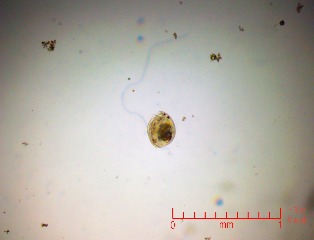 |
At
60x, here is one ostracod. You can see its internal organs and
two compound eyes. |
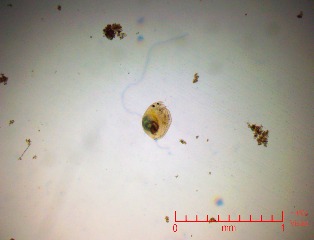 |
A
second specimen - alive and held still by the cover slip. |
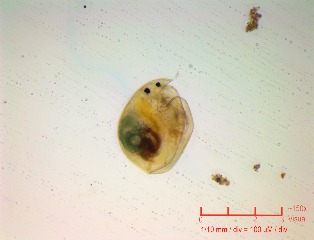 |
At
150x it starts to get interesting! Both valves are seen and on
the right is the opening or slot for the legs to protrude. |
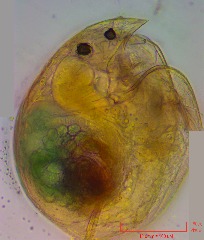 |
600x
- The internal organs seen clearly here, and the compound eyes
are like bunches of grapes. The legs are tucked inside at this
point. |
|
Camera: 10 Megapixel CMOS Platform: AmScope Trinocular 2000x Filters: NONE Location: Payson, Az Elevation: 5150 ft. Processing: Photoshop CS Pro HOME








